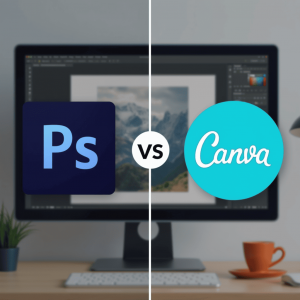
The rise of remote work has made video conferencing essential for businesses and individuals alike. Zoom and Microsoft Teams have emerged as leading solutions, each with distinct strengths and limitations. This comparison explores their key features, pricing models, and performance to help you determine which platform better addresses your specific video conferencing requirements.
User Interface and Ease of Use
Zoom’s Interface
Zoom built its reputation on simplicity. Its clean, intuitive interface allows new users to join meetings with minimal friction. The focus remains squarely on video conferencing, with controls logically positioned and easily accessible during calls.
Setting up a meeting takes just a few clicks, and participants can join via a simple link without necessarily creating an account. This straightforward approach has made Zoom particularly popular for quick calls and situations involving external participants.
Microsoft Teams’ Interface
Microsoft Teams offers a more comprehensive interface that reflects its position as a complete collaboration hub. Video conferencing exists within a broader ecosystem of chat, file sharing, and application integration.
For Microsoft 365 users, this integration provides seamless workflows, but newcomers may experience a steeper learning curve. The additional functionality comes with increased complexity, though recent updates have simplified the meeting experience.
Meeting Features Comparison
Video and Audio Quality
Both platforms offer high-definition video and clear audio, with performance differences being minimal in most scenarios. Zoom has traditionally held a slight edge in maintaining connection quality on unstable networks, using more aggressive bandwidth management.
Microsoft Teams has significantly improved its optimization for varying connection speeds, though it may consume more system resources than Zoom during video calls.
Participant Capacity
Zoom’s free tier allows up to 100 participants with a 40-minute time limit on group meetings. Paid plans extend this to 300-1,000 participants depending on subscription level, with unlimited meeting duration.
Microsoft Teams offers meetings with up to 300 participants in its standard plans, with larger webinar capabilities available in premium tiers. The free version of Teams limits meetings to 60 minutes and 100 participants.
Collaboration Tools
Zoom provides essential collaboration features including screen sharing, whiteboarding, breakout rooms, and in-meeting chat. Its strengths lie in meeting facilitation rather than ongoing project collaboration.
Microsoft Teams excels in collaboration, offering native document editing, persistent chat, channels for topic organization, and seamless integration with the entire Microsoft 365 suite. For teams already using Microsoft applications, this integration creates a significant advantage.
Integration Capabilities
Zoom’s App Marketplace
Zoom offers extensive third-party integrations through its App Marketplace, connecting with popular services like Slack, Google Workspace, and various CRM platforms. These integrations primarily focus on scheduling, automation, and enhancing meeting functionality.
The platform takes an ecosystem approach, allowing it to work alongside existing workflows rather than replacing them. This flexibility makes Zoom adaptable to diverse organizational setups.
Microsoft Teams’ Ecosystem
Microsoft Teams provides unparalleled integration within the Microsoft ecosystem. The platform directly incorporates SharePoint, OneDrive, and the entire Office suite, creating a unified workspace.
While Teams also supports third-party integrations, its real strength lies in how deeply it connects with Microsoft’s other productivity tools. For organizations heavily invested in Microsoft 365, this native integration eliminates many friction points in daily workflows.
Security and Privacy
Zoom’s Security Measures
Zoom faced significant scrutiny over security concerns in 2020, responding with aggressive improvements including end-to-end encryption, waiting rooms, and enhanced password requirements. The company implemented a 90-day security plan that substantially strengthened its platform.
Current Zoom security features include AES 256-bit GCM encryption, host controls, and compliance certifications for HIPAA, SOC 2, and other standards. These improvements have addressed most earlier concerns, though some organizations remain cautious.
Microsoft Teams’ Security Framework
Microsoft Teams benefits from Microsoft’s enterprise-grade security infrastructure and decades of experience protecting business data. The platform offers team-wide and organization-wide multi-factor authentication, single sign-on, and data encryption at rest and in transit.
Teams is built on the Microsoft 365 security framework, which includes advanced threat protection and compliance with major standards like GDPR, HIPAA, and ISO 27001. For security-conscious organizations, Microsoft’s established reputation may provide additional confidence.
Pricing Structure
Zoom’s Pricing Model
Zoom offers a straightforward tiered pricing structure:
- Free: Basic features with 40-minute limit on group meetings
- Pro ($15.99/month per user): Unlimited meeting duration, social media streaming, 1GB cloud recording
- Business ($19.99/month per user): Company branding, cloud recording transcripts, managed domains
- Enterprise (custom pricing): Unlimited cloud storage, dedicated customer success manager
The free tier serves as an effective entry point, while paid plans unlock advanced features and remove time constraints.
Microsoft Teams’ Pricing Model
Microsoft Teams’ pricing is integrated with Microsoft 365 subscriptions:
- Free: Basic features with 60-minute meeting limit
- Microsoft 365 Business Basic ($6/month per user): Includes Teams, Exchange email, and web Office apps
- Microsoft 365 Business Standard ($12.50/month per user): Adds desktop Office applications
- Microsoft 365 Business Premium ($22/month per user): Adds advanced security features
Teams’ value proposition is strongest when considered as part of the broader Microsoft 365 suite rather than as a standalone video conferencing solution.
Use Case Scenarios
Best Scenarios for Zoom
Zoom particularly excels in:
- Quick, standalone meetings requiring minimal setup
- Webinars and large virtual events
- Organizations using diverse productivity tools
- Educational settings with changing participants
- Situations requiring frequent meetings with external participants
Its focused approach to video conferencing makes it a specialist tool optimized specifically for virtual meetings.
Best Scenarios for Microsoft Teams
Microsoft Teams works best for:
- Organizations already using Microsoft 365
- Teams requiring persistent collaboration beyond meetings
- Workplaces needing unified communications (chat, calls, meetings)
- Projects involving collaborative document editing
- Situations where security and compliance are paramount
Teams’ strength lies in continuous collaboration rather than just scheduled meetings.
Mobile Experience
Both platforms offer robust mobile applications, though with different emphases. Zoom’s mobile app closely mirrors its desktop experience, maintaining simplicity while offering nearly all core features.
Microsoft Teams’ mobile application serves as a comprehensive communication hub, providing access to teams, channels, and files alongside meeting functionality. This makes Teams potentially more useful between meetings, while Zoom’s focused approach may provide a smoother in-meeting experience on mobile devices.
Conclusion: Making the Right Choice
The “best” video conferencing tool depends entirely on your specific requirements:
Choose Zoom if you:
- Need a dedicated video conferencing solution
- Frequently host meetings with external participants
- Value simplicity and ease of use
- Want flexible integration with various productivity suites
- Host webinars and large virtual events
Choose Microsoft Teams if you:
- Already use Microsoft 365 applications
- Need a comprehensive collaboration platform beyond meetings
- Require tight integration with Microsoft’s document management
- Value enterprise-grade security and compliance features
- Want unified communications across chat, calls, and meetings
Many organizations effectively use both platforms, leveraging Zoom for specific meeting scenarios while using Teams for internal collaboration. As remote and hybrid work models continue evolving, the flexibility to choose the right tool for each communication need becomes increasingly valuable.













